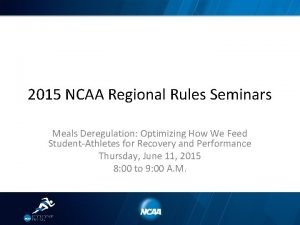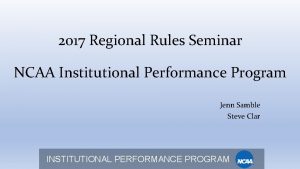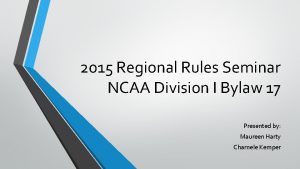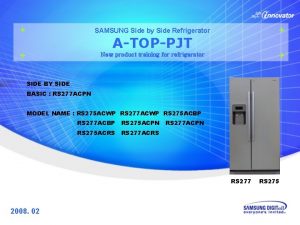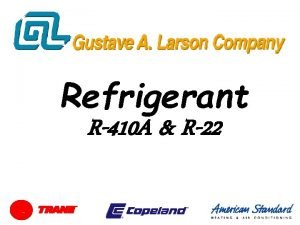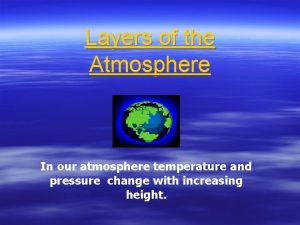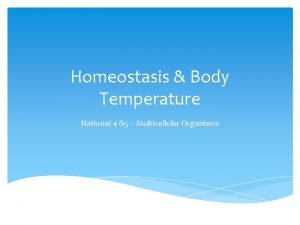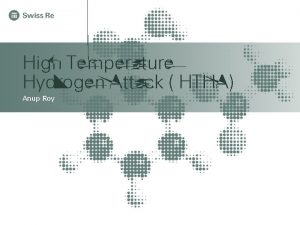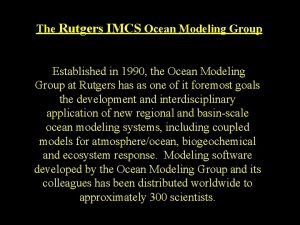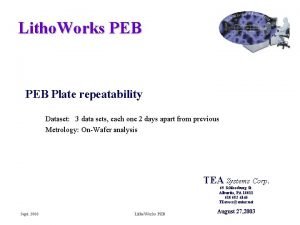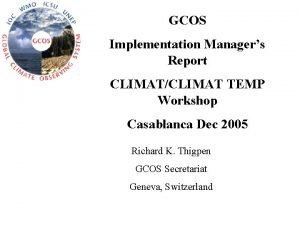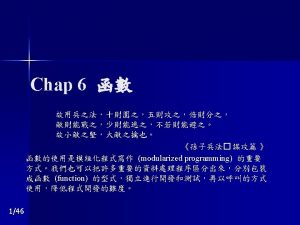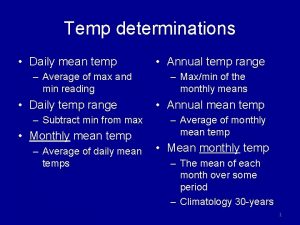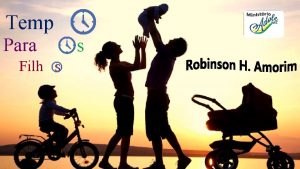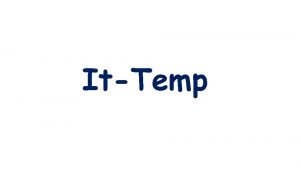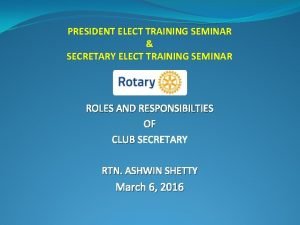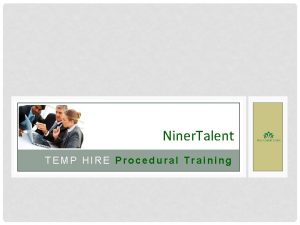RA III Regional Training Seminar on CLIMATCLIMAT TEMP










- Slides: 10

RA III - Regional Training Seminar on CLIMAT&CLIMAT TEMP Reporting (Buenos Aires, Argentina, 25 – 27 October 2006) Table-driven codes and migration plans (Introductory remarks)

Migration to Table-driven Code Forms (TDCF) The Fourteenth WMO Congress (2003) supported the conclusions of the CBS that table-driven code forms (TDCF), with their • self-description, • flexibility, • expandability are the solution to satisfy the demands of the rapidly evolving science and technology. 10/25/2020 2

Migration to Table-driven Code Forms (TDCF) • • • The table-driven code forms FM 94 BUFR and FM 95 CREX offer great advantages in comparison with the traditional alphanumeric codes (TAC) like FM 12 SYNOP (FM 71 -XII-CLIMAT) FM 35 TEMP (FM 75 -XII-CLIMAT TEMP). The reliability of binary data transmission provides for an increase in data quality and quantity received at meteorological centres, which would lead to the generation of better products. 10/25/2020 3

Migration to Table-driven Code Forms (TDCF) Congress noted that • CBS had developed a thorough plan for a WMO-wide migration to tabledriven code forms. The plan envisaged: • the replacement of TAC for observational data exchange by the binary code BUFR. • smooth transition without negative impacts on the WWW operations. 10/25/2020 4

Migration to Table-driven Code Forms (TDCF) The basic principles of the plan were: (a) The migration process should be flexible. Within the target dates defined in the plan (spanning from 2005 to 2015, depending on the data type), WMO Members could choose their own timetable for the migration (it was the data producer, not the user, who was the initiator of the migration process); (b) The use of CREX was an interim step in the migration to BUFR; (c) Data users: • must have access to new data produced in BUFR or CREX • be able to receive data exchanged in BUFR or CREX; • should have first priority for training; • should implement BUFR and CREX decoders ASAP • dual transmission (initially in BUFR and TAC, later in BUFR and CREX) should be provided, where data users were unable to receive or process BUFR or CREX; 10/25/2020 5

Migration to Table-driven Code Forms (TDCF) Cg-IX noted that some NMHSs and ECMWF would • make software for encoding/decoding BUFR, CREX available free of charge for Members with limited remote assistance at request Cg-IX also recognized that the costs involved to implement the migration should be compensated by the benefits to be gained, noting that the migration plan allowed sufficient time and flexibility for implementation. 10/25/2020 6

Migration to Table-driven Code Forms (TDCF) Congress endorsed the migration plan developed by CBS and urged every Member country to develop ASAP • a national migration plan, derived from the international plan, with analysis of impacts, costs, solutions, sources of funding (as necessary), national training, technical planning and schedule. 10/25/2020 7

Category Cat. 1: common Cat. 2: satellite observations Cat. 3: aviation(1) Cat. 4: maritime Cat. 5(2): miscellaneous Cat. 6(2): almost obsolete Lists of Traditional code forms Schedule SYNOP MOBIL PILOT MOBIL TEMP DROP CLIMAT TEMP SAREP SATEM SARAD SATOB METAR SPECI TAF AMDAR ROFOR BUOY TRACKOB BATHY TESAC WAVEOB SHIP CLIMAT SHIP PILOT SHIP TEMP SHIP CLIMAT TEMP SHIP RADOB IAC FLEET GRID(to GRIB) RADOF CODAR ICEAN GRAF NACLI etc. SFAZI SFLOC SFAZU RADREP ROCOB SHIP ARFOR WINTEM MAFOR HYDRA HYFOR Start experimental Exchange(3) Nov. 2002 for some data (AWS SYNOP, TEMP USA) Current at some Centres 2006 2002 at some Centres for AMDAR 2005 2003 for Argos data (BUOY, sub-surface floats, XBT/XCTD) 2004 Not applicable Start operational exchange(3) Nov. 2005 Current at some Centres 2008 2003 for AMDAR 2007 2003 for Argos data (BUOY, sub-surface floats, XBT/XCTD) 2006 Not applicable Migration complete Nov. 2010 Nov. 2006 2016 2005 for AMDAR 2012 2008 for Argos data (BUOY, sub-surface floats, XBT/XCTD) 2008 Not applicable

Migration to Table-driven Code Forms (TDCF) Three levels of training are being addressed by WMO Level 1 - general understanding of the philosophy and amigration overview; Level 2 - Deeper understanding of TDCF, introduction and use of TDCF software including debugging and the interaction with data-processing applications; Level 3 - Total understanding of the TDCF, for programming of encoders and decoders (only needed if the software project is not implemented) 10/25/2020 9

Migration to Table-driven Code Forms (TDCF) Details on the TDCF will be provided by Dr Alduchov 10/25/2020 10
